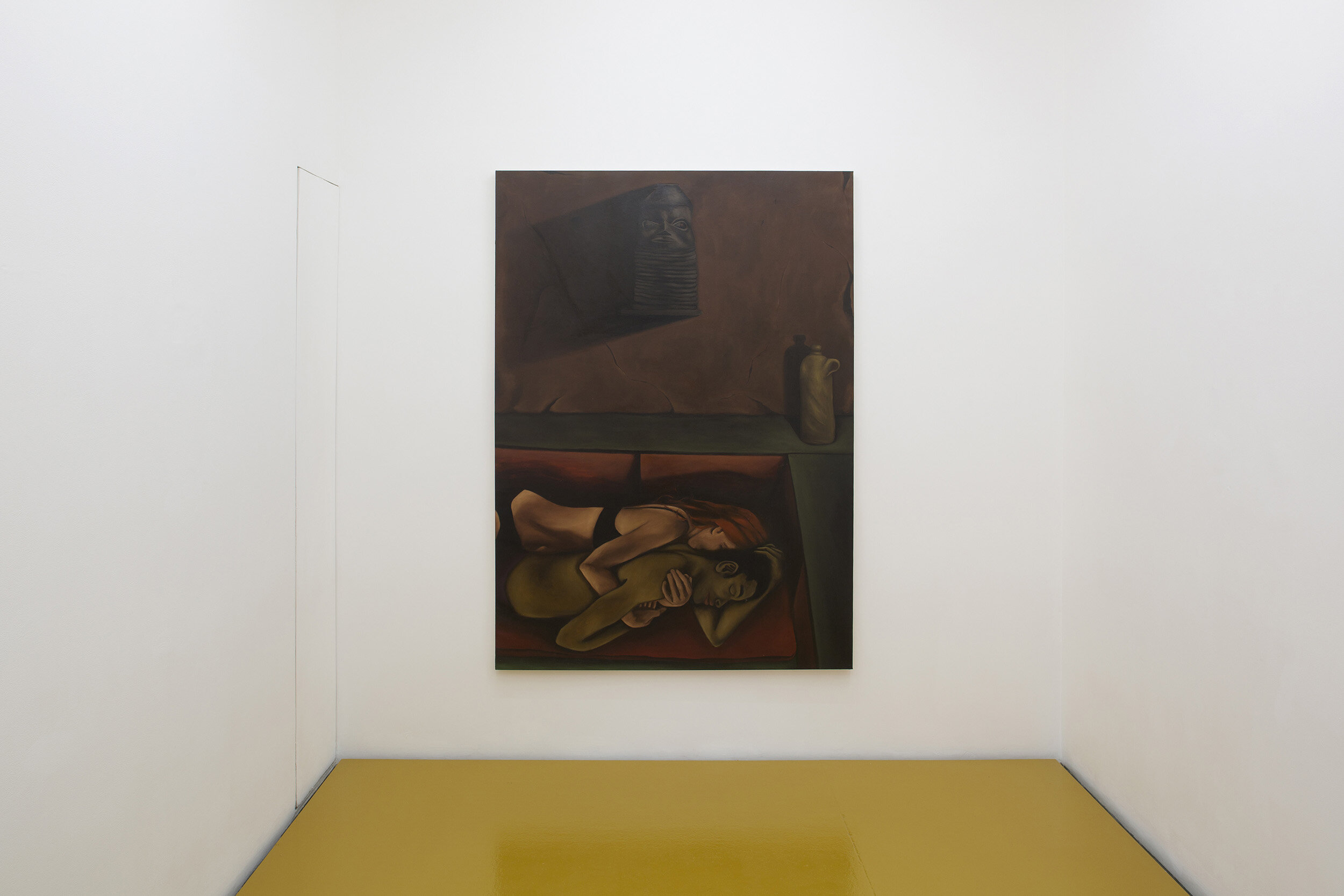
Lewis Hammond
Still life
Exhibition
-> May 2 2020 – Jun 27 2020
Lulu presents a solo exhibition of the British, London-based painter, Lewis Hammond.
It is quite frankly impossible to know how to respond to the emotional, intellectual and cultural needs of this moment. It is so easy to seem tone deaf, off key, or, simply beside the point. The scope of the unfolding catastrophe, which increases daily, is still way beyond our ken. Any potential response is continually faced with this relentlessly shifting scale, and as such, we are always losing any stable ground upon which to gather ourselves and address it. Nevertheless, the work of Lewis Hammond seems to embody if not the macro aspect of the moment, then the micro, the personal, private experience of what many of us may currently be experiencing. Indeed, if Hammond’s tenebrous pictures felt relevant in a pre-pandemic world, their portrayal of extreme states of mind, such as fear, anxiety, desire and claustrophobia, feels more pertinent than ever now.
The work in this exhibition, which was made pre-and incipient crisis in Mexico and then completed en pleine crise in London, is liable to bring to mind many things. The artist’s dark and moody palette, not to mention phantasmagoric subject matter, deliberately evokes a whole host of old masters, particularly Goya, and the black paintings, as well as other examples of the Spanish baroque, like Ribera. It may seem curious and significant that a young artist of mixed, Afro-Caribbean heritage should directly engage, and therefore ratify the western, European canon while so much of contemporary discourse is in the process of rethinking and even disenfranchising that same canon. But this, one suspects, has a lot less to do with a willful dismissal of these issues than it does with an interest in fundamental human experience, which that same canon contains, such as dread, malevolence, fragility, and tenderness. The gothic quality of this work is undeniable, and is liable to summon up, what with its penchant for human drama, as well as a casual violence and understated eroticism, the southern gothic of William Faulkner, although the stark, penumbral, often chilly atmospheres might be better suited to the bleak and orphaned geography of a Samuel Beckett play. That said, Hammond’s intention with this particularly body of work, with its cramped and close-cropped spaces, is to create a feeling of being boxed in, aggravated by the compact-scale of the architectural space it finds itself in, Lulu. Probably the most salient, unifying quality of this body of work is its general adherence to the still life. There is a quality of stillness here, an observant and quiet immobility, which is particularly arresting and poignant. From a sleeping couple embracing to a wall of primitive looking knives (aptly entitled Talisman) to a diptych of framed, thorny branches, the work seems to dwell in a placeless interior of its own making. It does not gaze out at the world so much as it introspectively withdraws into its own private, if harried space of survival.
— Lulu
The exhibition can be consulted online, or visited by appointment with a mask only, no more than two people at a time.